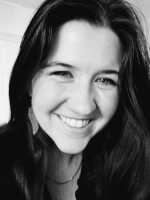News Brief
COVID-19 cases are increasing across much of the country, but it’s hard to say how much.
Better access to at-home COVID tests and vaccines often reduce symptoms, so fewer people need to see a doctor when they get sick.
That makes it harder to collect data on where and how quickly the virus is spreading, which can be stressful for the immunocompromised or other vulnerable groups.
“The good thing is, people aren’t going to the hospital as much and aren’t dying as much. The bad news is, people are still going to the hospital and are still dying,” said Melissa Marx, an epidemiologist who teaches at the Johns Hopkins Bloomberg School of Public Health.
For those concerned about getting COVID-19, Marx said they should talk with their doctor about personalized precautions and treatments they get if infected. That might include asking about how to access antiviral medications, which can help prevent hospitalization in vulnerable patients if taken soon after infection.
University of Wyoming public health expert Christine Porter recently got COVID-19. She’s at higher risk of getting very sick with the virus, and was able to access an antiviral treatment.
“I’m really grateful for that, because otherwise I might be another one of those statistics that shows up later in the hospital,” she said.
Porter added that while raw COVID-19 numbers aren’t very reliable right now, watching trends can be helpful.
“Presumably, those are a massive underreporting. But perhaps the rate of increase might be similar, just at a much higher level than those are showing,” Porter said.
Even word-of-mouth can sometimes provide a sense of whether COVID-19 is spreading in rural, Western towns, she said. She heard it's spreading quite a bit around some Wyoming communities.
“For people who truly can’t afford to bring [COVID-19] into their household, obviously immunizations and boosting and wearing masks in public places are what I recommend,” she said.
Both Porter and Marx said wastewater testing data may also be helpful in tracking COVID’s growth in a community, though many communities don’t have that data and it can be more complicated to interpret.
This story was produced by the Mountain West News Bureau, a collaboration between Wyoming Public Media, Boise State Public Radio in Idaho, KUNR in Nevada, the O'Connor Center for the Rocky Mountain West in Montana, KUNC in Colorado, KUNM in New Mexico, with support from affiliate stations across the region. Funding for the Mountain West News Bureau is provided in part by the Corporation for Public Broadcasting.




